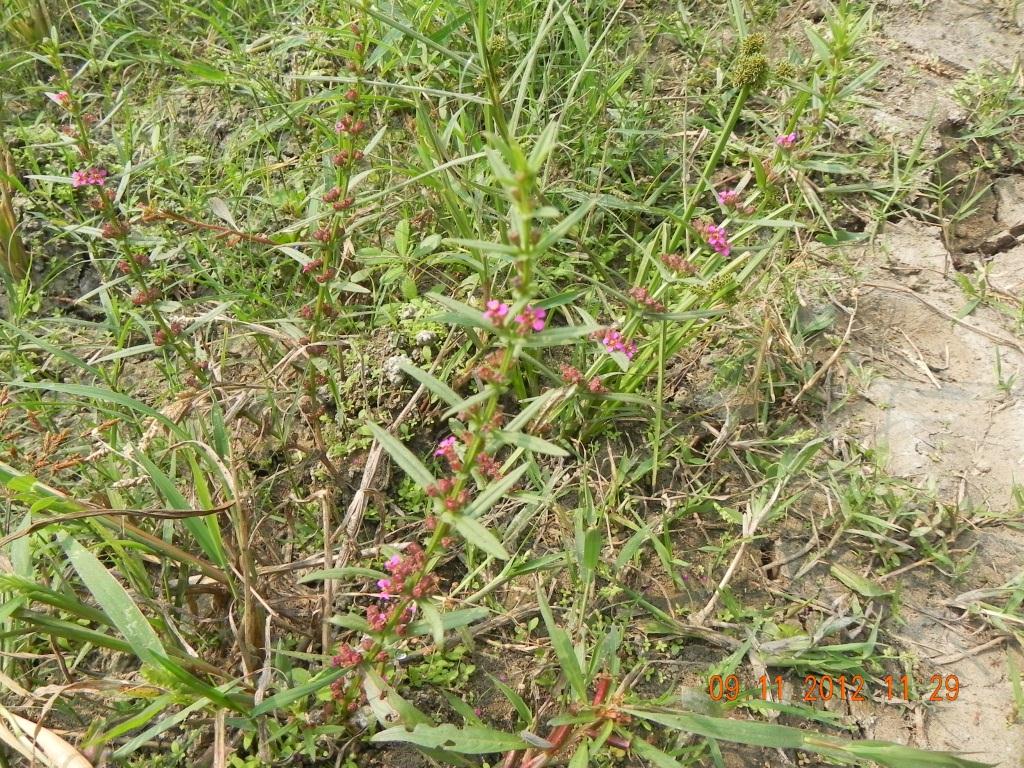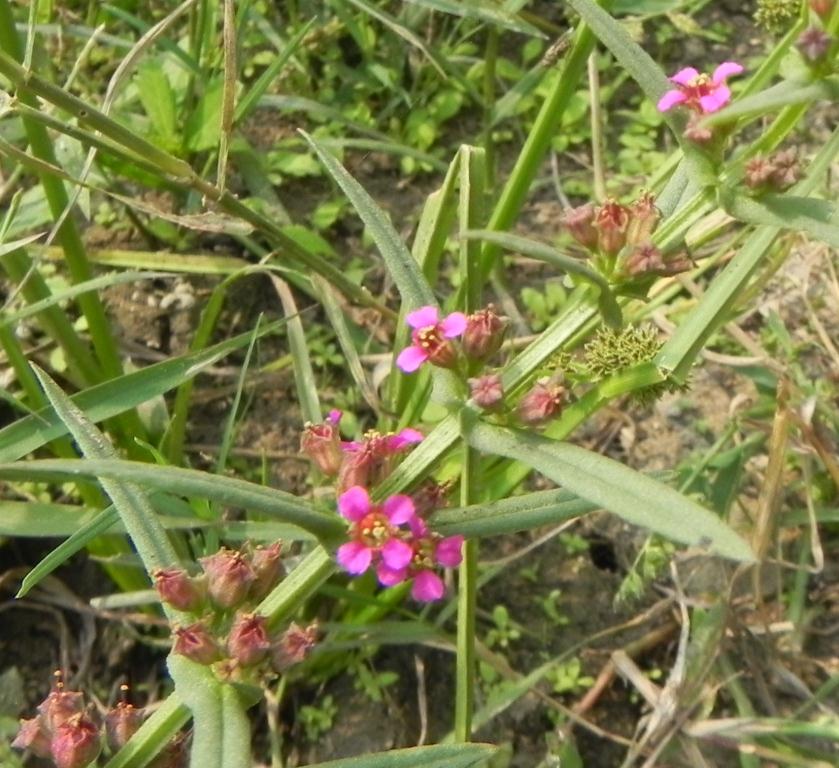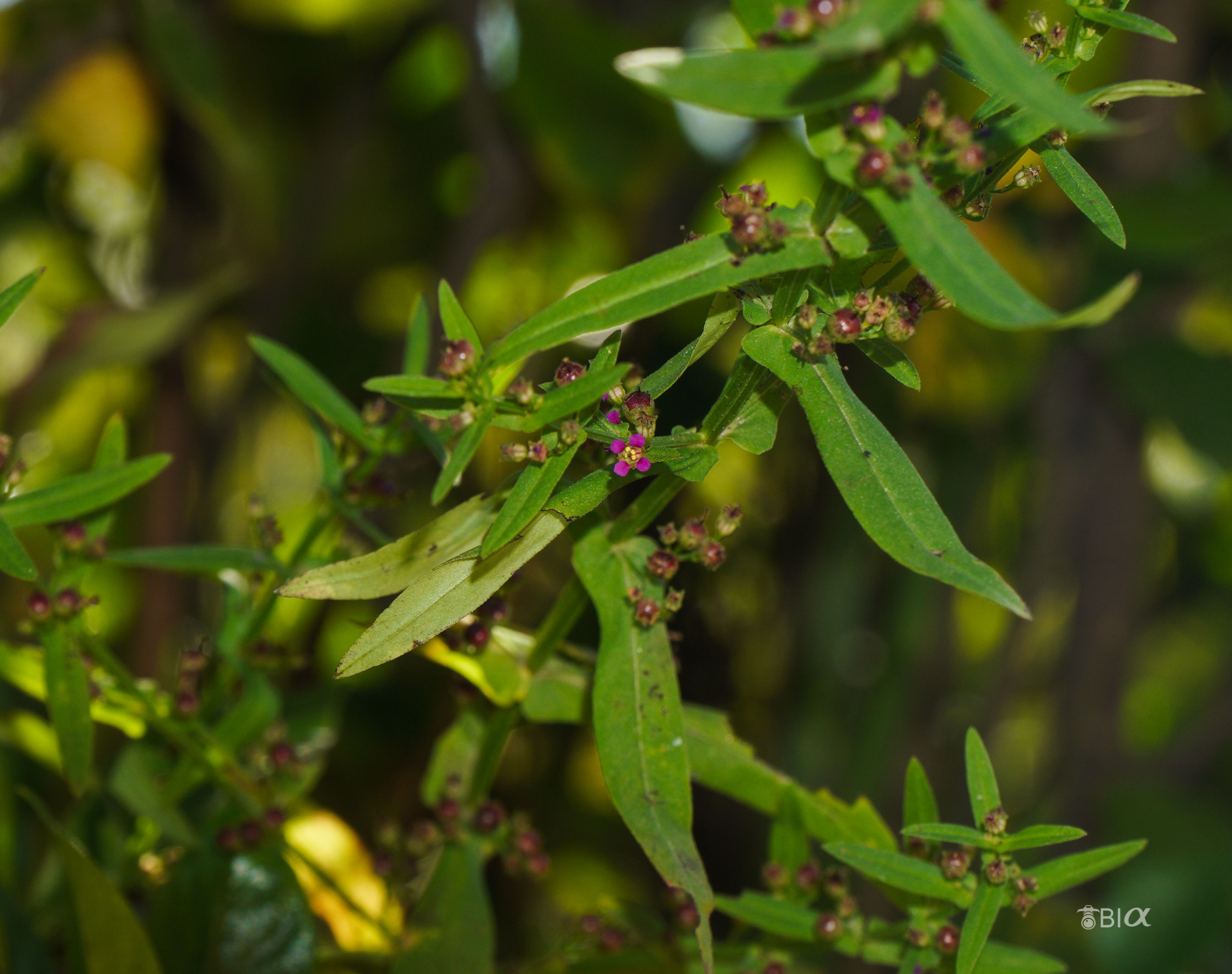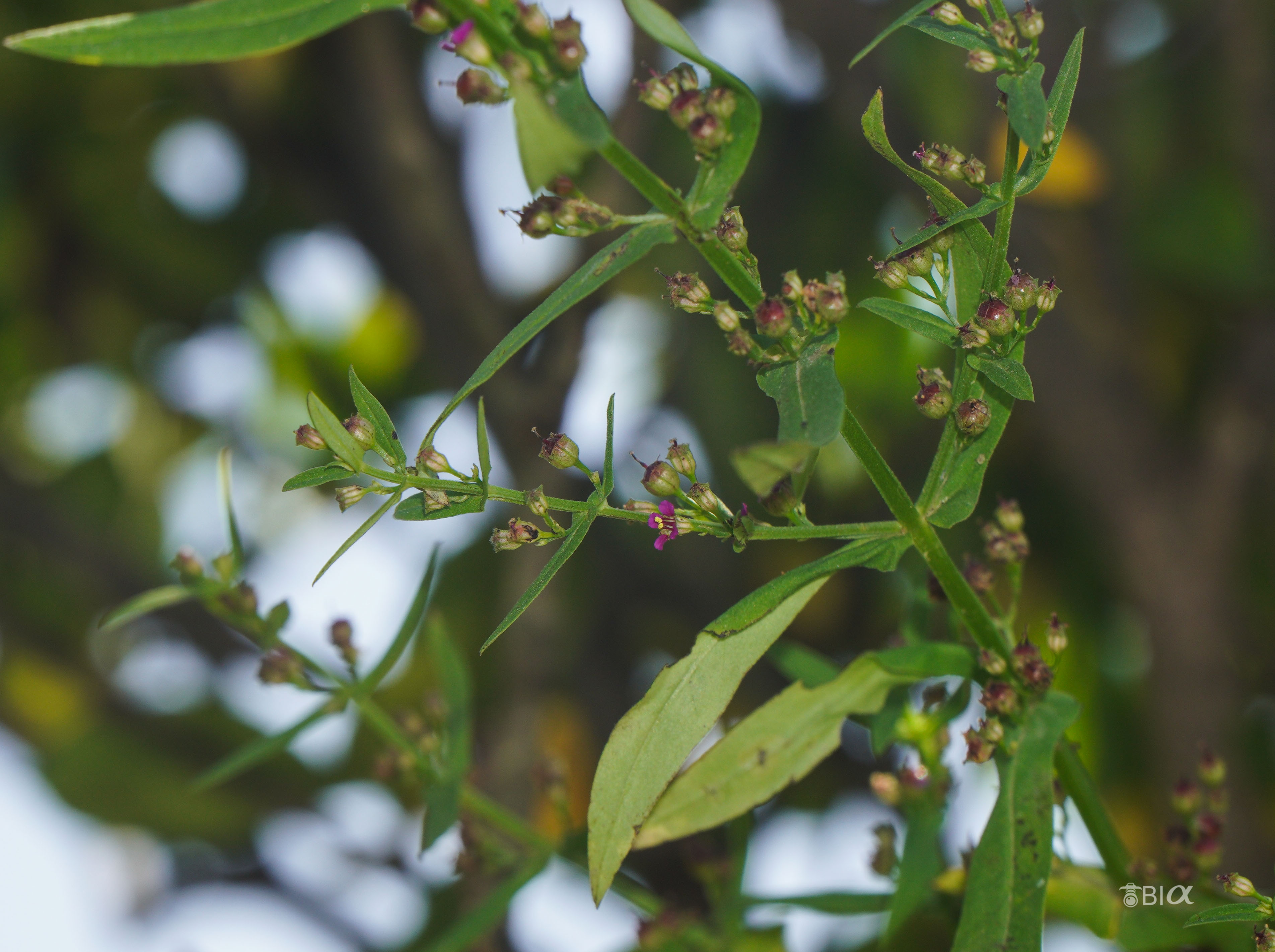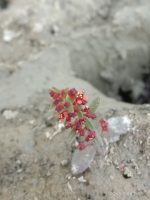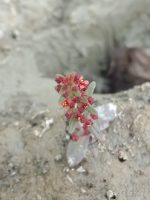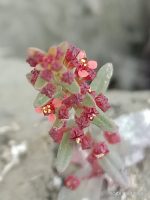|
Ammannia auriculata Willd., Hort. Berol. 1: 7 1806. (syn: Ammannia aegyptiaca Willd.; Ammannia auriculata var. elata (A.Fernandes) A. Fernandes; Ammannia hyrcanica Fisch. ex Steud.; Ammannia latifolia Walp.; Ammannia longipes Wright apud Sauvalle; Nesaea transvaalica A. Fernandes);
.
This species occurs throughout tropical and sub-tropical regions of the world, from south-eastern North America through central America and the Caribbean to Argentina, from Egypt to south Africa and east through Pakistan and India east to China, as well as in northern Australia. This species typically grows in shallow water or on the margins of streams, rivers, wadis, ponds and reservoirs as well as in marshes, seasonally flooded depressions, wet grassland and wet woodland, in many areas it is a common weed of rice fields and on damp, disturbed ground (Cook 1996, 2004; Wood 1997, Ghazanfar 2007). It grows on a variety of substrates, including black clay soils, mud and sand.
This species is described as being used for “raising blisters in rheumatic pains, fevers etc.” in Pakistan (efloras 2010) and “used as a counter-irritant for rheumatic pains” in India (Cook 1996).
. 14102011-BS-1 A small herb from Pujam Karnal Haryana or id:
pls id this small herb about 20cm-30cm. with opposite leaves found wild in a marshy area in Pujam Karnal Haryana a few pics more. Attachments (2) This should be Ammania sp. may be A. coccinea. I think … is right. A. coccinea appears closest. Is it reported from the area? If it is A coccinea then it is a new report from Haryana. However Ammania auriculata found in the area. If it is a new record, kindly wait for fruits to appear to confirm. Found the post interesting; There is also a good key in eFlora of China. 2a. Leaves attenuate or truncate at base; petals absent; style shorter than the ovary; cymes sessile and dense; flowers sessile ……. A. baccifera
2b. Leaves auriculate often clasping at base; petals present; cymes pedunculate; flowers pedicellate ……….. (3) 3a. Style half as long as ovary or shorter, capsule 1.5 mm in diam,; petals 1 mm long; calyx reflexed in fruit …….. A. multiflora
3b. Style as long as ovary or longer, capsule 2-5 mm in diam; petals 1.5-2 mm long …………….(4) 4a. Capsule 2-3.5 mm in diam; flowers usually 7 (3-15); capsule as long or longer than calyx lobes ………. A. auriculata 4b. Capsule 3.5-5 mm in diam; flowers usually 3 (3-5); capsule shorter than or barely equalling the calyx lobes ……… A. coccinea I would like to go with Ammannia auriculata Willd. for the time being. Weed for ID 25072013 CS 3 : Attachments (2). 3 posts by 2 authors.
Is this a species of Rotala. Location: Patna, Agricultural fields Ammannia auriculata Willd. (accepted name) ?? : 6 posts by 2 authors. Attachments (8) Location : Kathmandu , Nepal
Altitude: 4500 ft.
Date: 23 October 2016 Looks close to some images at http://www.westafricanplants.senckenberg.de/root/index.php?page_id=14&id=95#
Though images of leaves at the following look different:
Yes, leaves look little different but I could get matching for this only out of 3 listed in Nepal, specially the fruits/ seeds and the altitude.
http://www.efloras.org/florataxon.aspx?flora_id=110&taxon_id=101366 Rotala (Lythraceae) page with images of species in efloraofindia : 4 posts by 3 authors. Pl. go through Rotala (Lythraceae) page with images of species in efloraofindia. If you find any incorrect identification, pl. let us know. If anybody can send images of other species of this genera (for incorporation in the website), if any, or can identify unidentified images, it will be really nice.
Thanks a lot to Dr. Thomas Mathew & Dr. K S Prasad for helping us on this genus.
I would like to know to which species of Rotala this plant belongs. Plant was growing in Delhi.
Attachments (3) – 1 MB each
I think close to images at Ammannia auriculata Willd. Yes, I hope this is rightly identified by …!!
Rotala this plant belongs. Plant was growing in Delhi : 3 posts by 2 authors. Location: Gyaneswor, Kathmandu, Nepal
Elevation : 4500 ft.
Date 3 October 2018
Habit : Wild Which Ammania ??
Pl. check Thank you …! I was with same opinion.
Ammannia auriculata Willd.
Nepali Name : जरायु Jaraayu
Lamiaceae
Location: Kathmandu
Elevation: 1400m asl
Habitat: cultivated land
Side view with fruits at early stage Please check Ammannia of Lythraceae ! May be A. baccifera ! Ammania multiflora most likely Thank you …! It is Ammannia auriculata Willd. (Nepali name= जरायु) as of floral characters. Ammannia auriculata Willd. Yes as per images at
https://sites.google.com/site/efloraofindia/species/a—l/l/lythraceae/ammannia/ammannia-auriculata .
Ammannia. Pl. check Appears close to images at Ammannia auriculata Willd. ID plz. Clicked at Faridkot, Punjab (India), elevation is 196 metres (643 ft) on June 9, 2019
Seems to be Ammannia baccifera: Taking it as Ammannia aegyptiaca Willd. as per keys provided by Dinesh ji in the discussions at FOR VALIDATION :: Ammannia baccifera L. :: Waghbil, Thane, Maharashtra :: Sep 27, 2008 · JUN23 DV106 There are 4 species having distribution in Punjab, viz., Ammannia desertorum Blatt. & Hallb., Ammannia auriculata Willd., Ammannia senegalensis Lam. and Ammannia baccifera L.
Leaf pattern looks different from Ammannia aegyptiaca Willd.
Yes, leaves look more like OK |
Ammannia auriculata
Updated on November 5, 2025



